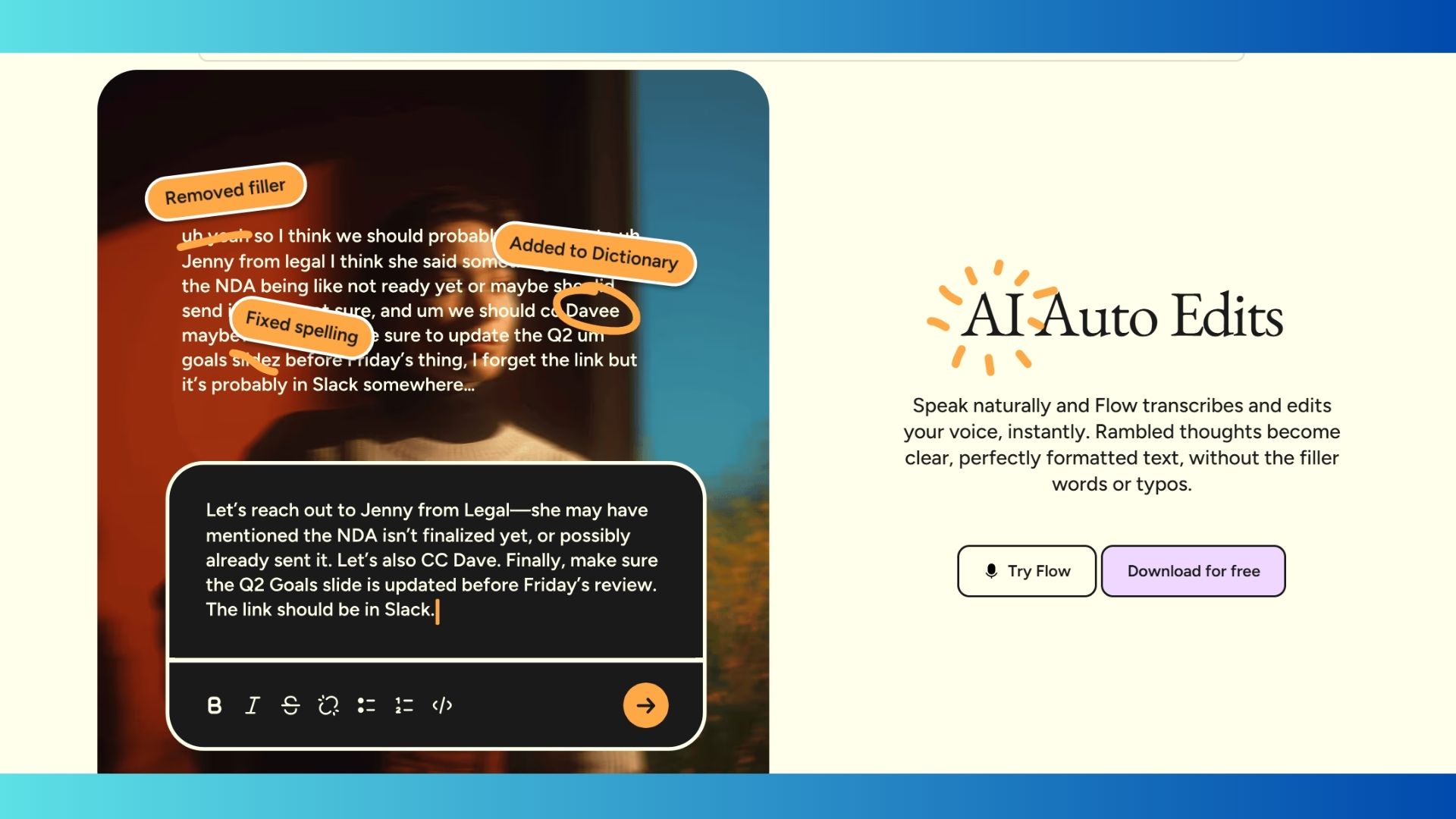
As someone who spends a lot of time testing and reviewing AI tools, one question I get a lot is “What do you recommend for transcription?” Up until a few weeks ago I probably would have suggested Otter.ai, but I’ve been experimenting with voice tools lately, and one of the most surprisingly effective combos has been Wispr Flow + Claude.
From what I’ve seen from transcription tools, I wasn’t expecting much. Of the dictation software I’ve tested, most either fall apart with natural speech or require so many corrections they slow me down. But this setup completely changed how I write.
Wispr Flow is a free, real-time AI voice dictation tool that works across any app. That means I can use it in email and messaging just as easily as chatbots. So, I can open Claude, place my cursor in the chat box, and just start talking — on mobile or desktop.
Wispr Flow does so much more than transcribe — it actually edits as you speak. This has been a huge time saver for brain dumps and to help keep my prompts sounding a lot more polished, compared to those lacking proper grammar and punctuation.
Brain dumping into Claude actually works

My favorite way to use this AI tool combo is when I’m stuck on a story idea. Instead of staring at a blinking cursor, I walk around the house and just talk. Because Wispr Flow types as I speak and Claude responds, the back-and-forth feels more like a conversation than writing. I can even say, “Rephrase that casually,” or “List pros and cons,” and watch Claude build something useful right away.
Obviously, this could be done with ChatGPT Voice or Gemini Live, but I don’t always want to use those tools. But when Claude is exactly what I need, Wispr Flow helps me get the messy ideas out fast.
It’s not error-free
That said, this combo isn’t perfect. Wispr Flow is fast and surprisingly accurate, but if I speak for too long — say three or four minutes straight — things start to unravel. Claude gets confused, the prompt becomes too long, and I have to go back and clean it up.
There’s also a mental adjustment. You have to pause between chunks if you want Claude to respond properly. If you just keep talking, it’ll treat your whole monologue as one giant prompt, which doesn’t always work.
And sometimes I found myself watching the screen to make sure Wispr Flow transcribed everything correctly. It’s not bad, just not something I can fully “set and forget” yet.
Bottom line
Using Wispr Flow with Claude feels like a hack I wish I discovered sooner. It’s helped me get out of my own way, especially when my thoughts are coming faster than my energy to type them out.
If you do a lot of creative thinking, note-taking, or brainstorming, this setup is worth trying. Just keep your prompts short, speak clearly and know that you may still need to do a little editing at the end.
But for me, it’s officially part of my writing toolkit now and it might just be the fastest way to get from idea to draft that I’ve seen yet.
Follow Tom's Guide on Google News and add us as a preferred source to get our up-to-date news, analysis, and reviews in your feeds. Make sure to click the Follow button!







